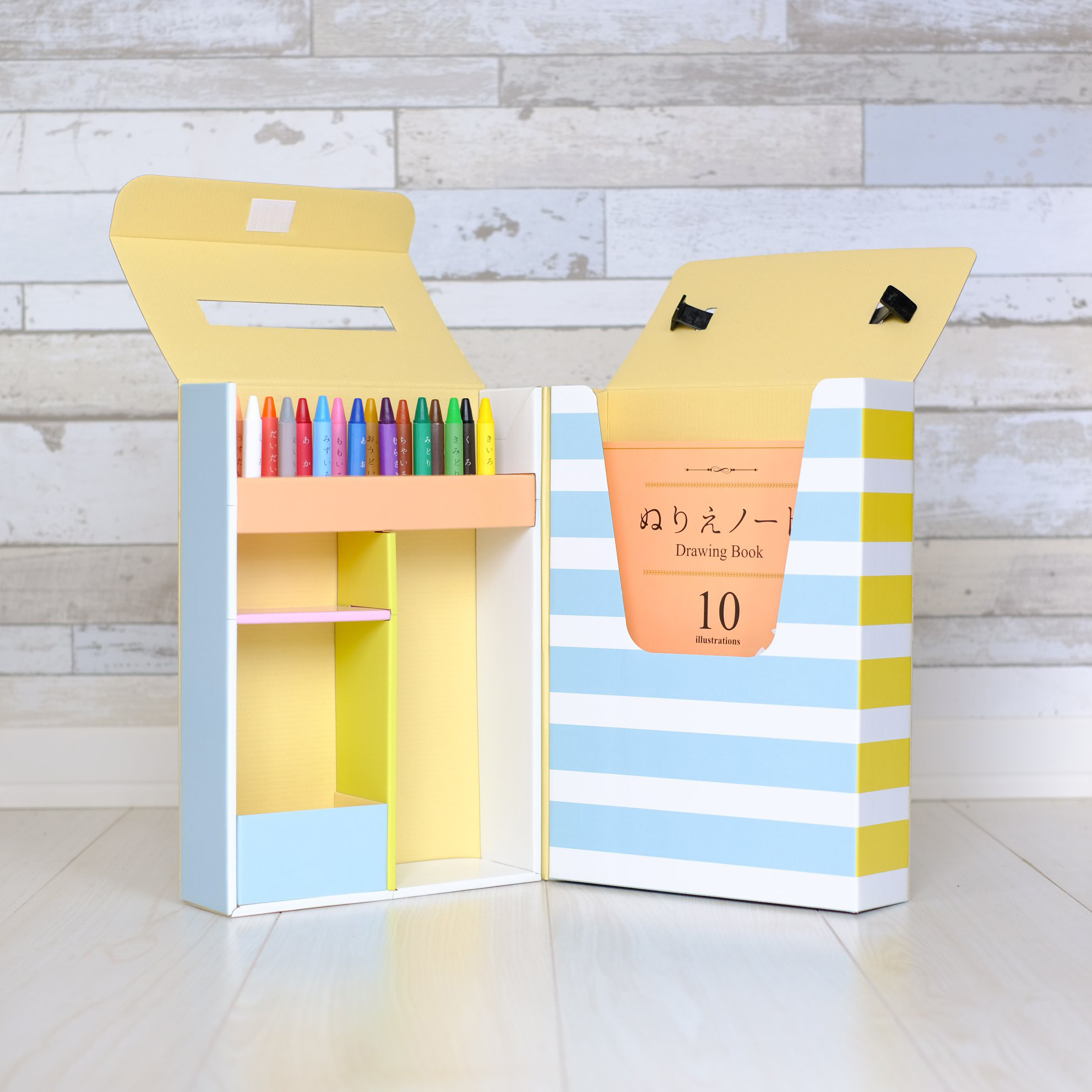
A new sustainable alternative to traditional crayons was recently created by Japanese company Mizuiro. The Vegetable Crayons are plant-based, eco-friendly, and produced from food waste. The inspiration to create a safer and more eco-friendly crayon came when Mizuiro founder Naoko Kimura left her job as a designer to spend more time with her child. While looking at the crayons her daughter used, she wondered: “Whenever children take an interest in something, they put it in their mouth. So why do crayons, something so close to most children, not seem all that safe?”
Most of the crayons on the market today are not environmentally friendly because they are made with paraffin wax (which contains petroleum, a toxic chemical) and are unsafe for children if they accidentally eat them. Additionally, according to the Crayon Collection—an initiative that aims to upcycle gently used crayons for underserved school children in the United States—approximately 150 million crayons are discarded annually by US restaurants alone, and they often end up in the landfill.
Many crayons, including major brand Crayola’s, are not vegan as they are made with stearic acid—which is derived from tallow, or beef fat, that gives the crayons their distinct smell.
 Using vegetable waste
Using vegetable waste
Kimura set out to make safer crayons for her daughter, and the project eventually evolved into a zero-waste, eco-friendly initiative using the discards from her region’s plant agriculture industry. The Vegetable Crayons are made from a solid wax made from rice bran and liquid rice bran oil—both of which are byproducts of the rice-polishing process. To add coloring to the crayons, Mizuiro uses discarded vegetables such as:
- The outer leaves of cabbage discarded during harvesting
- The outer skin of Chinese yam that’s removed during processing
- Irregular pieces of corn that would otherwise be discarded
- Apple skins that are peeled off and discarded during processing of apple chips
- Blackcurrent skins leftover from juicing
- Irregular pieces of sweet potato
- Food-grade bamboo charcoal
This kind of food waste is crushed into vegetable powder to color the crayons. Eighty percent of the vegetables the company uses as crayon ingredients are grown and produced locally in Japan. For additional color, Mizuiro uses food coloring that is certified as safe food additives, but the food coloring is less than one third of the pigments used in regular crayons. The colors of the Vegetable Crayons reflect the vegetables used to make them and are named accordingly. Instead of standard color names such as yellow and green, Mizuiro uses names such as cabbage and carrot.
Helping children learn to love vegetables
Mizuiro’s use of real vegetables also aims to help children further develop an interest in and love of vegetables as they interact with and smell them—each crayon has a mild scent of the vegetable it’s made with. To provide further proof of their safety, the Vegetable Crayons also carry certification from the European toy safety standard, considered the strictest toy safety standard in the world.
Earlier this year, Mizuiro hosted a Kickstarter campaign and surpassed her fundraising goal, raising more than $9,000 to further expand production of the Vegetable Crayon.
This post was originally published on VegNews.com.